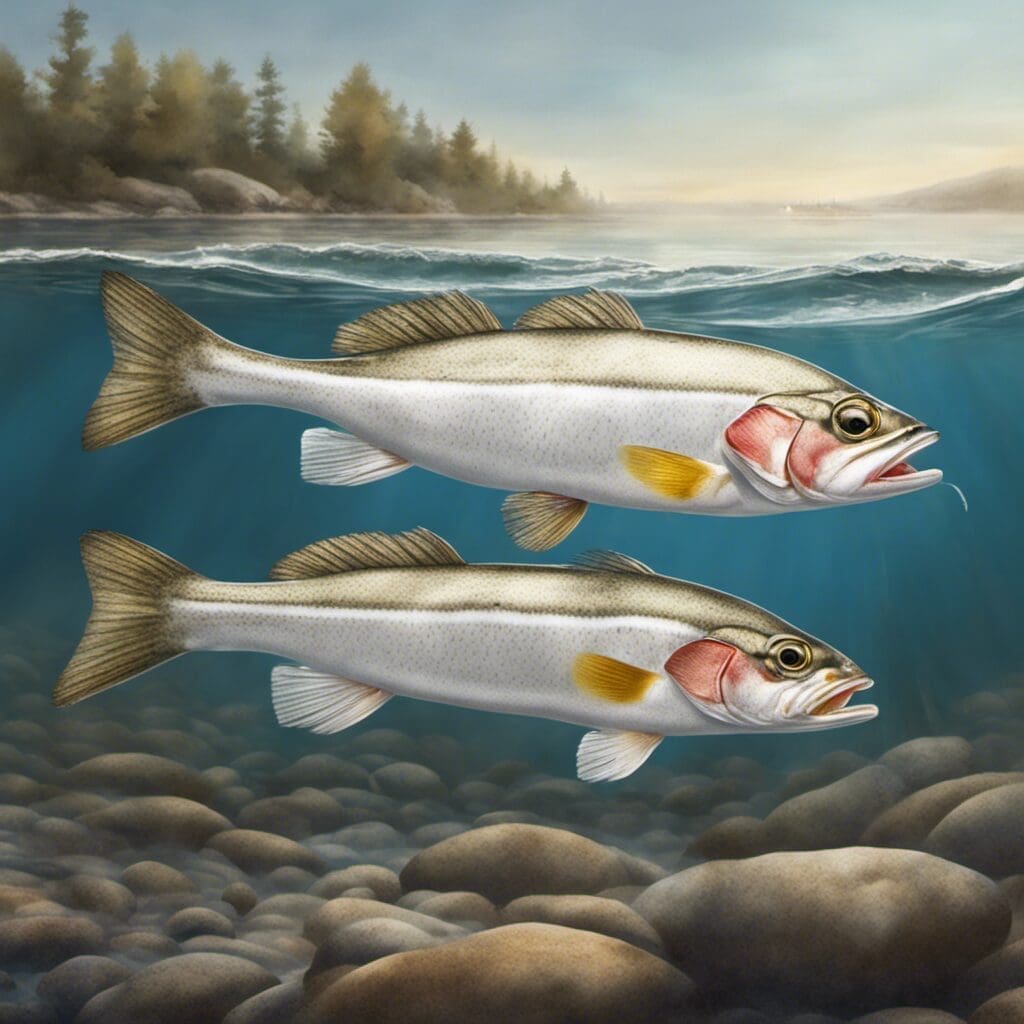Introduction
The White Weakfish, or Cynoscion regalis, as it is scientifically known, is a species of fish that belongs to the Sciaenidae family, commonly referred to as croakers or drums.
Conservation Status
The White Weakfish is currently not considered to be under threat and is listed as a species of ‘Least Concern’ on the global conservation status. Despite this, efforts are still made to conserve and protect the species, primarily through regulations on fishing.
Statistics
| Stat | Average | Range |
|---|---|---|
| Length | 70 cm | 48-110 cm |
| Weight | 3.5 kg | 0.9-7.9 kg |
| Average Lifespan | 17 years | N/A |
Distribution
White Weakfish are primarily found in the Western Atlantic Ocean, ranging from the Gulf of Maine to the Gulf of Mexico. The species does not exhibit any significant migration patterns.
Habitats
Predominantly preferring marine or brackish waters, White Weakfish occupy a varied depth range, typically between 10 to 75 m. They are inclined towards warmer waters, usually between 9-25°C.
When and Where to See
Peak season to witness this species runs from July to October, and they are particularly active during twilight periods.
Best Fishing Locations
- Chesapeake Bay, USA
- Delaware Bay, USA
- Long Island Sound, USA
- Hudson River, USA
- Coast of Florida, USA
- Coast of Maryland, USA
- Coast of North Carolina, USA
- Coast of South Carolina, USA
General Tips
Look for areas of moving water or where baitfish are congregating.
How to Catch
White Weakfish respond well to live bait such as shrimps or small crabs, and artificial lures. Various fishing methods can be used, including trolling and bottom fishing. Best times are typically during the twilight periods.
Identification Guide
The White Weakfish has an elongated, silver body, with dark grey or black patches. The dorsal fin is spiky, and the lower jaw juts out, distinguishing them from similar species.
Culinary
How to Cook
Often grilled or fried, the White Weakfish has a firm texture.
Taste Profile
This species has a mild flavour, often compared to red snapper or bass.
Nutritional Information
Low in fat and high in protein, the White Weakfish is a nutritional food choice, also providing a good source of vitamin D and B12.
Additional Information
Behavior
The White Weakfish are predominantly bottom dwellers and are known to form large breeding aggregations called ‘drums.’
Predators and Threats
Natural predators include larger fish and marine birds. Overfishing also presents a potential human-induced threat.
References and Further Reading
For further information, please refer to the National Oceanic and Atmospheric Administration website or the Chesapeake Bay Program’s fisheries guide.

